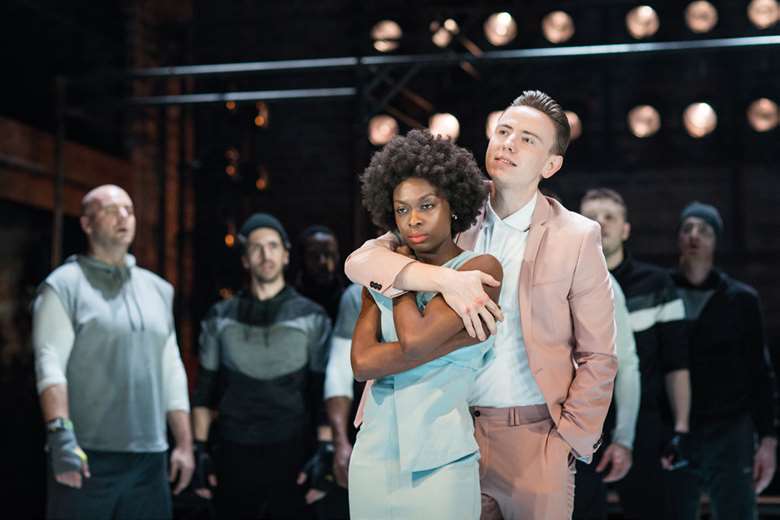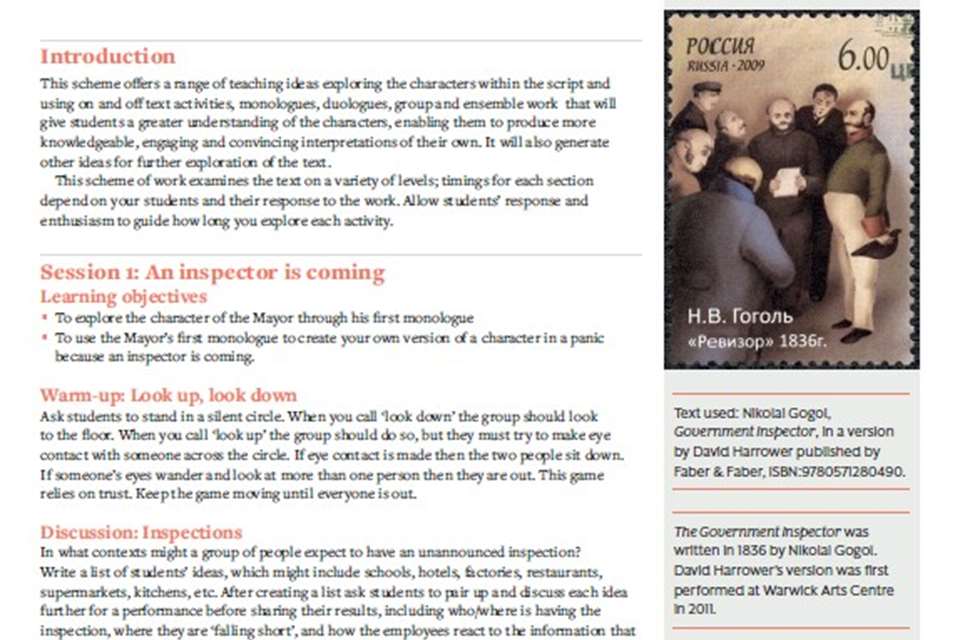The Duchess of Malfi by John Webster
John Webster, Karen Britland
Wednesday, February 1, 2023
Each issue of D&T we bring you a teacher or academic’s guide to a play for study with your students. This issue, Karen Britland introduces John Webster’s The Duchess of Malfi.

Helen Maybanks
In its fascination with surveillance, secrets, and human beings’ connection to their environments, John Webster’s Duchess of Malfi resonates deeply with our contemporary moment. At the same time, its fantastical features – a ghostly echo, poisoned bible, a dead man’s hand, waxworks that look like hanged bodies, and a character who believes himself to be a wolf – make it a riotous play to study and perform.
Plot
Malfi tells the story of a young widow (known as ‘the Duchess’), whose brothers – one a Cardinal and the other her twin, Ferdinand – are determined to prevent her from remarrying. To learn more about her behavior, the brothers plant Bosola as a spy into her household, but the Duchess nevertheless manages to contract a secret marriage with Antonio, her steward. The new couple are very happy and go on to have three babies whom they contrive to keep secret from the outside world. Eventually though, the Duchess’s brothers hear rumours of their sister’s children and take drastic steps to unearth the secret.
The Duchess is captured and tortured by Ferdinand, who attempts to make her despair and damn her immortal soul by showing her wax effigies of her family’s bodies. He encourages her to believe that Antonio and her children are dead. The Duchess is then strangled by Bosola, but dies with dignity. The situation unravels quickly. Moved to pity by the Duchess’s death, Bosola decides to kill the Cardinal, but accidentally stabs Antonio before fulfilling his mission. Ferdinand mentally disintegrates until, believing himself to be a wolf, he fights and kills Bosola while also receiving a fatal wound. Blood and guts mingle on the stage and a chorus of courtiers turns up to witness the tragedy and to proclaim the Duchess and Antonio’s eldest son the couple’s rightful heir.
Themes and comparisons
The play’s structure invites us to investigate important themes from contrasting angles. Towards the end of Act 1 Scene 2, the Duchess conceals Cariola, her maid, behind a tapestry before gently persuading Antonio into marriage. The union is contracted per verba de presenti: that is, it invokes an older custom whereby a couple were considered to be wed if they made promises in front of a witness. Antonio realises he is married when Cariola steps out from her place of surveillance behind the tapestry. This seems to be a happy event, but the situation’s dangerous undertones are heightened in Act 3 Scene 2, when the same characters reassemble in the Duchess’s chamber. To play a gentle trick on the Duchess, Cariola and Antonio tiptoe away, leaving her talking to herself about her husband and children. Ferdinand enters the room secretly, effectively mimicking Cariola’s hidden presence in the earlier scene. This time, the situation turns tragic as Ferdinand’s suspicions about his sister are confirmed and he leaps forward to challenge her violently.
The juxtaposition of these scenes not only generates discussion about how to stage their motifs of surveillance effectively, but also stimulates a conversation about the advantages and disadvantages of surveillance techniques in our own culture, particularly in the light of Bosola’s attempts to uncover the private secrets of the Duchess’s body when he offers her apricots in Act 2 Scene 1.
Environments
Throughout the play, human bodies are shown to be intricately entwined with their environments. In Act 1 Scene 1, Antonio makes a famous speech, likening a healthy, noble court to a public fountain that spreads beneficial drops throughout society. Bosola, though, immediately points out that the Cardinal and his brother are ‘like plum trees that grow crooked over standing pools,’ attracting crows and caterpillars. The play’s opening scene shows how the play’s characters use imagery from the natural world to make sense of human society, and how they simultaneously project human ideas onto the natural world.
As the play progresses, the animal imagery builds until it blurs the boundaries between the human and the animal. Bosola terms himself a ‘creature’, while an old lady resembles ‘an abortive hedgehog’ and Antonio calls Bosola ‘an impudent snake’. Towards the end of the play, Ferdinand loses his human senses and starts behaving like a wolf. A discussion of this scene raises issues about our responsibility towards each other and the natural world, alongside conversations about what differentiates humans from beasts.
Genre and staging
It’s easy to emphasise the outlandish humour in Ferdinand’s lycanthropy, but might we feel differently if, instead, his transformation was played for its macabre, nightmarish qualities? How should the multiple, violent deaths at the end of the play be represented? Should we see them as an absurdity, a tragedy, or a lesson that secrets that will always come to light? The Duchess of Malfi taps into issues that still concern us today, at the same time as it allows us to see how a play’s meanings might change depending on its actors’ performance choices.






